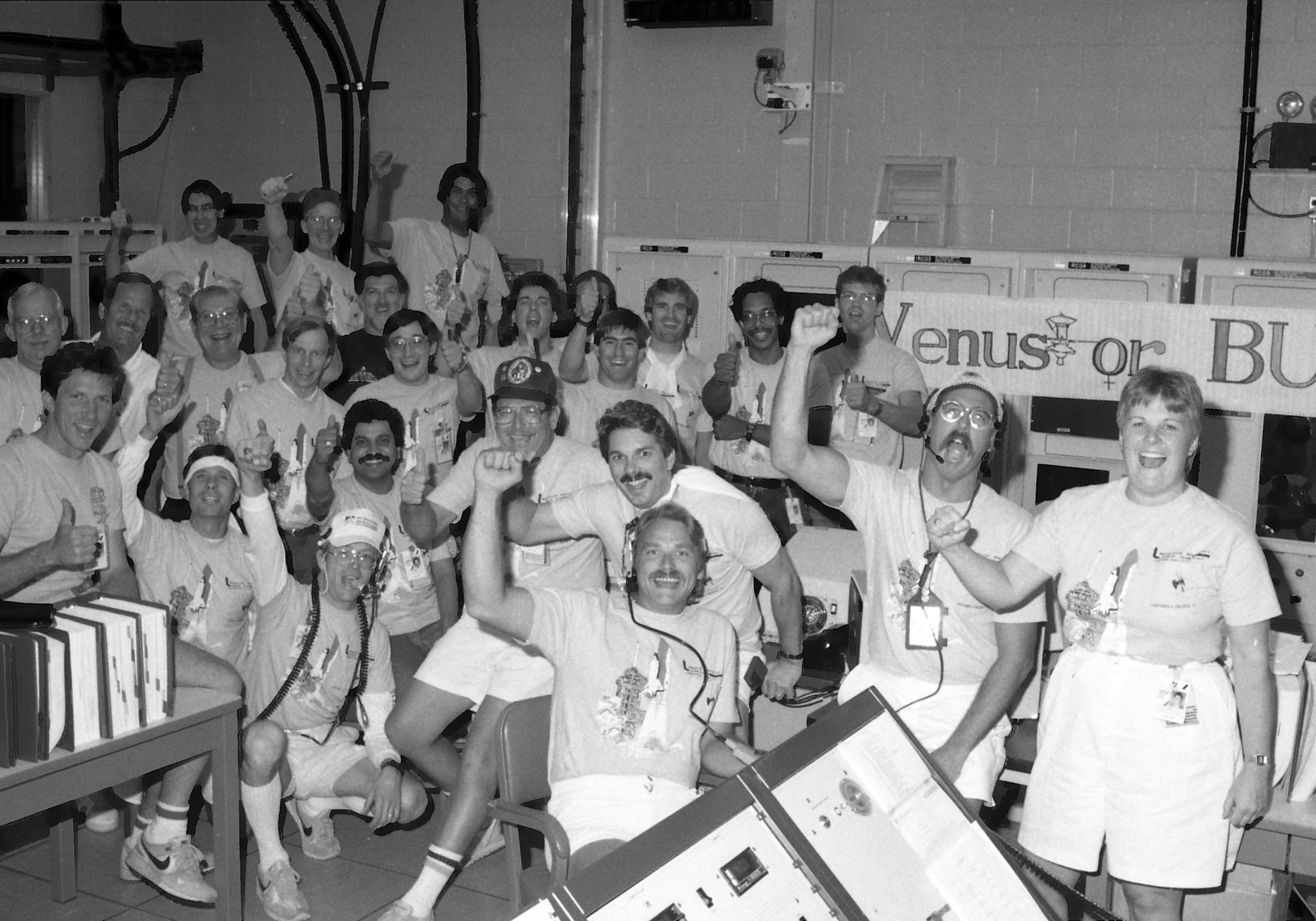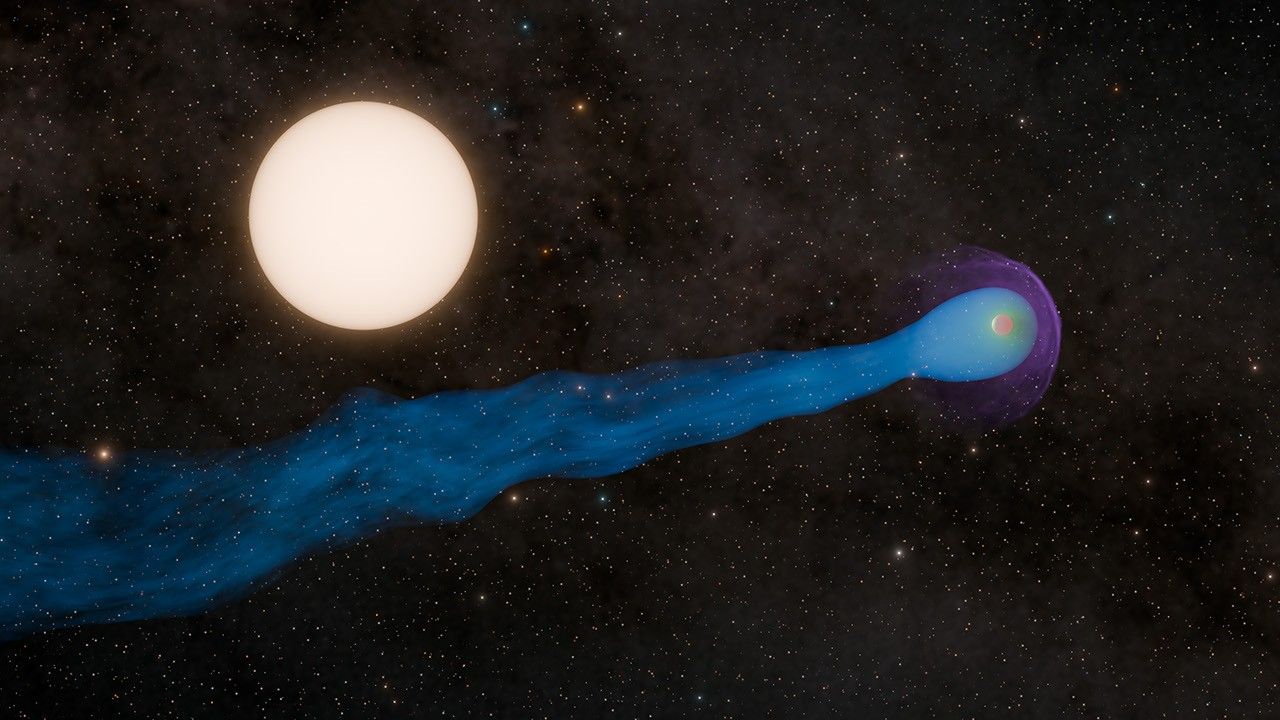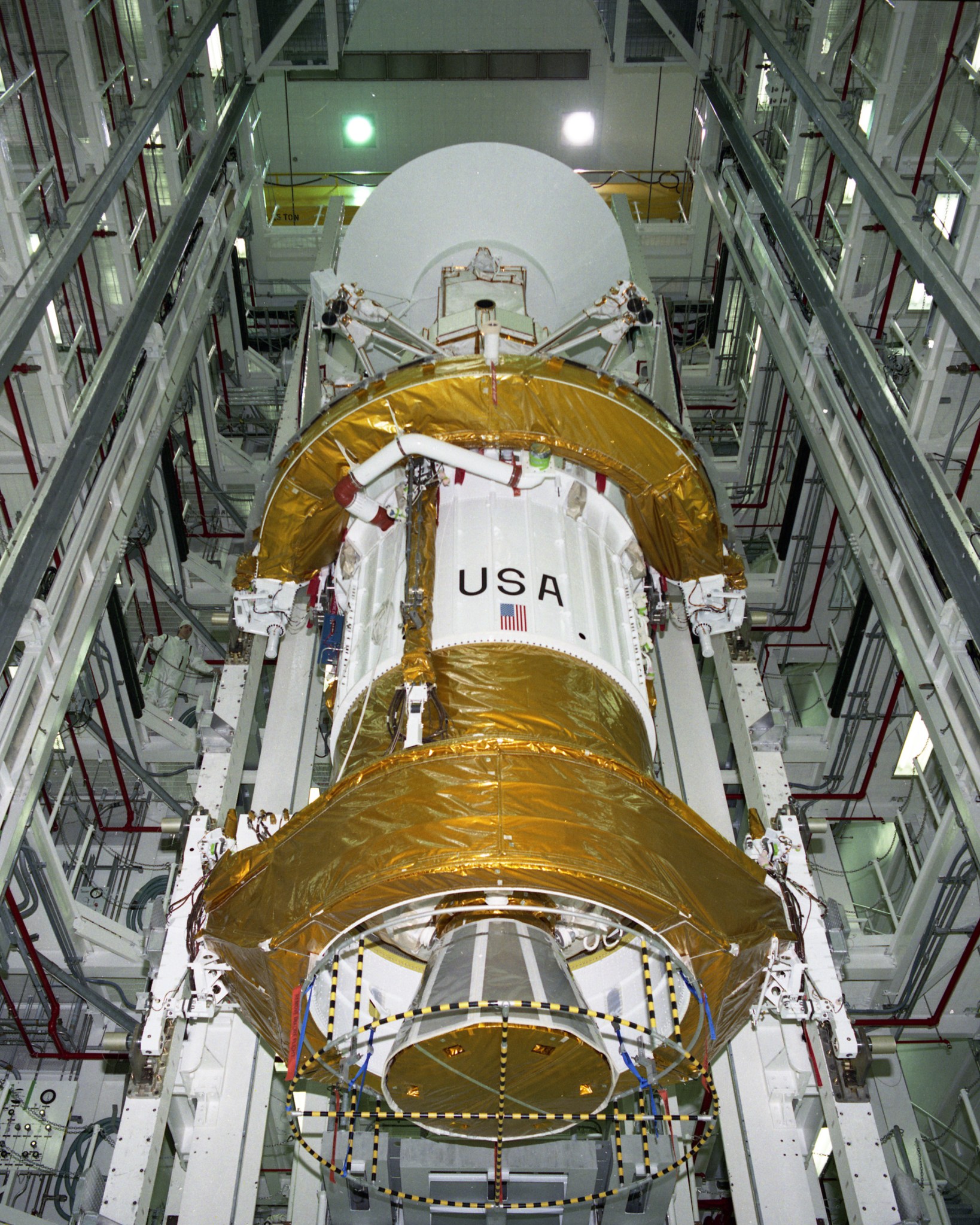Though NASA’s Magellan radar mapper was not the first mission to Venus, it was unique in that it was the first interplanetary spacecraft deployed from a space shuttle. It also was the first spacecraft sent to complete a radar map of the entire surface of the planet and study the geology and surface geophysics.
The STS-30 mission on space shuttle Atlantis lifted off from Launch Pad 39B at NASA’s Kennedy Space Center 25 years ago on May 4, 1989. Aboard the space shuttle were Commander David M. Walker, Pilot Ronald J. Grabe, and Mission Specialists Norman E. Thagard, Mary L. Cleave and Mark C. Lee, and more than 260,000 pounds of cargo, including the primary payload, the 7,604-pound Magellan spacecraft.
Six hours and 14 minutes into Atlantis’ flight, the Magellan/Venus radar mapper and its attached inertial upper stage (IUS) was deployed into flight from the payload bay. After the IUS fired its first and second stages, Magellan was sent on its 15-month journey to Venus.
Magellan arrived at Venus on Aug.10, 1990, and started mapping the planet continuously for 243 days, the time necessary for the planet to rotate once under the spacecraft’s orbit, and continued for two more 243-day cycles. It sent back radar images every three hours. Magellan continued for three more 243-day cycles to complete the mapping.
Unlike visible light, Magellan’s radar waves were able to penetrate Venus’ thick clouds and reflect off the solid planet back to Earth. Aided by computer processing, the radar reflections were turned into pictures of the planet’s surface. For the first time, scientists had a complete global map of Venus. Magellan’s radar mapping revealed the existence of continent-like highlands, hilly plains, large volcano-like mountains and flat lowlands.
With its mission completed, Magellan intentionally was crashed into Venus on Oct. 12, 1994, having used up almost all of its propellant.
The Magellan spacecraft began its journey in Denver, Colo., and visited the Jet Propulsion Laboratory (JPL) in Pasadena, Calif., before it was shipped to Kennedy for additional processing prior to its launch.
Julie Webster was a systems engineer with Martin Marietta (now Lockheed Martin) in Denver during Magellan’s assembly, test and launch operations phase. Webster said there were close to 450 people from Martin Marietta, JPL and Hughes Aircraft Company in El Segundo, Calif., working on Magellan. About 100 people worked on Magellan at Kennedy prior to launch. Hughes built the spacecraft’s radar sensor.
“I was the Magellan test conductor at launch,” Webster said. “From October 1988 to January 1989, we were processing the spacecraft itself, testing sequences and new software in the Spacecraft Assembly and Encapsulation Facility-2 (SAEF-2) at Kennedy.”
She jokingly called Magellan the “spare parts” program. The spacecraft used a spare antenna, electronics box and several space thrusters from Voyager. The team shared computer and tape recorder parts with the Galileo program.
“We were always scrambling to make things work,” Webster said.
At Kennedy, John Conway was the NASA Payload Operations director when Magellan arrived at SAEF-2. Kennedy hosted the spacecraft and processing team for final assembly and checkout, and he worked closely with the JPL and Martin Marietta team.
He recalls a battery fire on the spacecraft that threatened to delay the launch of STS-30. The team worked through the Thanksgiving and Christmas holidays to recover and stay on track.
“They did a very good job working through the problem and getting Magellan ready for its mission,” Conway said. “It was great teamwork.”

Also aboard Atlantis were three mid-deck experiments. All had flown before. Mission Specialist Cleave used a portable laptop computer to operate and monitor the Fluids Experiment Apparatus (FEA). An eight-millimeter video camcorder, flown for the first time on the shuttle, provided the opportunity for the crew to record and downlink in-orbit activities such as the FEA, which was a joint endeavor between Rockwell International and NASA.
Payload bay video cameras were used to record storm systems on Earth as part of the Mesoscale Lightning Experiment. Atlantis also was used as a calibration target for a third experiment involving ground-based electro-optical sensors at the U.S. Air Force Maui Optical Station in Hawaii.
Atlantis touched down at Edwards Air Force Base, Calif., on May 8, 1989. The mission lasted a total of 4 days and 56 min.





























